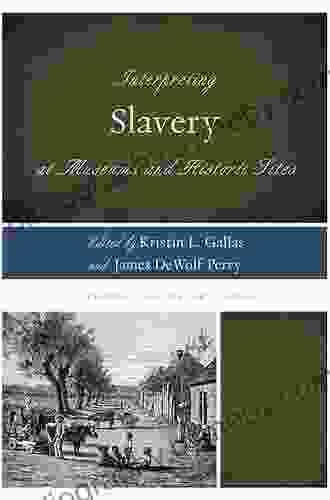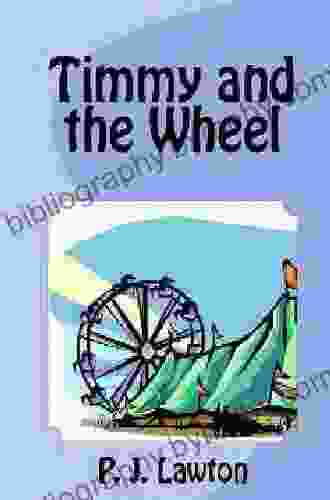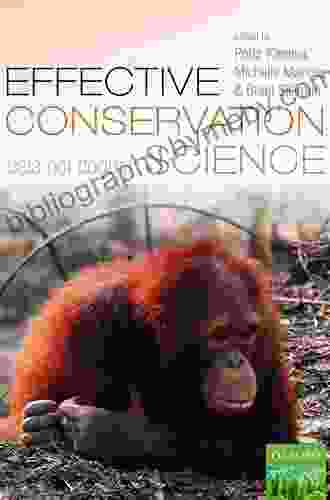Interpreting Slavery at Museums and Historic Sites: Interpreting History to Shape the Future

The interpretation of slavery at museums and historic sites presents a profound opportunity for us to confront the complexities of our past and its enduring legacies. These institutions serve as powerful platforms for uncovering hidden narratives, sparking challenging discussions, and fostering a deeper understanding of the human experience.
4.8 out of 5
| Language | : | English |
| Paperback | : | 160 pages |
| Item Weight | : | 9.5 ounces |
| Dimensions | : | 6 x 0.4 x 9 inches |
| File size | : | 5323 KB |
| Text-to-Speech | : | Enabled |
| Screen Reader | : | Supported |
| Enhanced typesetting | : | Enabled |
| Word Wise | : | Enabled |
| Print length | : | 230 pages |
Unveiling the Multifaceted Past
Museums and historic sites offer a unique window into the multifaceted world of slavery. Through artifacts, documents, and personal accounts, they bring to life the experiences of enslaved individuals, their resilience, their suffering, and their resistance. Visitors are immersed in the tangible remnants of a dark period that shaped the course of human history.
By presenting diverse perspectives and highlighting the complexities of slavery, these institutions challenge traditional narratives and encourage critical thinking. They reveal the intricate web of power structures, economic interests, and social beliefs that perpetuated this abhorrent practice.
Facing Historical Trauma with Courage
Interpreting slavery involves confronting the deep wounds inflicted by historical trauma. Museums and historic sites provide a space for acknowledging and processing this pain, fostering empathy and understanding among visitors. Through guided tours, interactive exhibits, and educational programs, they facilitate difficult but necessary conversations about the lasting impact of slavery on individuals, communities, and society as a whole.
By creating a safe and respectful environment, these institutions empower visitors to engage with the complexities of slavery without diminishing or trivializing its horrors. They offer a platform for healing, reconciliation, and a deeper appreciation for the human spirit's resilience.
Fostering Community Engagement and Dialogue
Beyond traditional museum exhibits, many institutions actively engage with the surrounding community to facilitate meaningful dialogue about slavery and its contemporary implications. Community outreach programs, workshops, and public forums provide a platform for residents to share their perspectives, reflect on shared history, and work together towards a more just and equitable society.
By encouraging community participation, museums and historic sites foster a sense of ownership and responsibility for preserving and interpreting the past. They create a space where diverse voices can be heard, building bridges of understanding and fostering a shared commitment to addressing the legacies of slavery.
Education and Awareness: Shaping the Future
Museums and historic sites are vital educational resources, playing a crucial role in shaping our understanding of slavery and its lasting impact. Through school visits, teacher training programs, and curriculum development, they support educators in integrating slavery into their lessons, ensuring that future generations are equipped with the knowledge and critical thinking skills to engage with this complex subject.
By raising awareness about the history of slavery, these institutions foster a greater appreciation for human rights, diversity, and social justice. They inspire visitors to reflect on the present and work towards a future free from oppression and inequality.
Interpreting slavery at museums and historic sites is an ongoing and essential endeavor that contributes to our collective understanding of history, its complexities, and its enduring legacies. By confronting the past with courage, fostering community engagement, and promoting education and awareness, these institutions play a vital role in shaping the future we want to create.
As we continue to grapple with the challenges of our time, the lessons learned from slavery serve as a powerful reminder of the resilience of the human spirit and the importance of striving towards a more just and equitable society.
4.8 out of 5
| Language | : | English |
| Paperback | : | 160 pages |
| Item Weight | : | 9.5 ounces |
| Dimensions | : | 6 x 0.4 x 9 inches |
| File size | : | 5323 KB |
| Text-to-Speech | : | Enabled |
| Screen Reader | : | Supported |
| Enhanced typesetting | : | Enabled |
| Word Wise | : | Enabled |
| Print length | : | 230 pages |
Do you want to contribute by writing guest posts on this blog?
Please contact us and send us a resume of previous articles that you have written.
 Book
Book Novel
Novel Page
Page Chapter
Chapter Text
Text Story
Story Genre
Genre Reader
Reader Library
Library Paperback
Paperback E-book
E-book Magazine
Magazine Newspaper
Newspaper Paragraph
Paragraph Sentence
Sentence Bookmark
Bookmark Shelf
Shelf Glossary
Glossary Bibliography
Bibliography Foreword
Foreword Preface
Preface Synopsis
Synopsis Annotation
Annotation Footnote
Footnote Manuscript
Manuscript Scroll
Scroll Codex
Codex Tome
Tome Bestseller
Bestseller Classics
Classics Library card
Library card Narrative
Narrative Biography
Biography Autobiography
Autobiography Memoir
Memoir Reference
Reference Encyclopedia
Encyclopedia Gary Unger
Gary Unger Fumio Hayashi
Fumio Hayashi Kenneth Cline
Kenneth Cline Gerald S Strober
Gerald S Strober Kristine Kathryn Rusch
Kristine Kathryn Rusch Tiffany Jewell
Tiffany Jewell Gary W Gallagher
Gary W Gallagher Roger Connors
Roger Connors Steve Miska
Steve Miska Zelda Barrons
Zelda Barrons Geniuz Gamer
Geniuz Gamer Wayne Teasdale
Wayne Teasdale George S Clason
George S Clason Kimberly Smith Lukhard
Kimberly Smith Lukhard Gen Tanabe
Gen Tanabe Gerry Duggan
Gerry Duggan G Eric Francis
G Eric Francis Gary Faigin
Gary Faigin Katherine Dunham
Katherine Dunham Gabby Rivera
Gabby Rivera
Light bulbAdvertise smarter! Our strategic ad space ensures maximum exposure. Reserve your spot today!
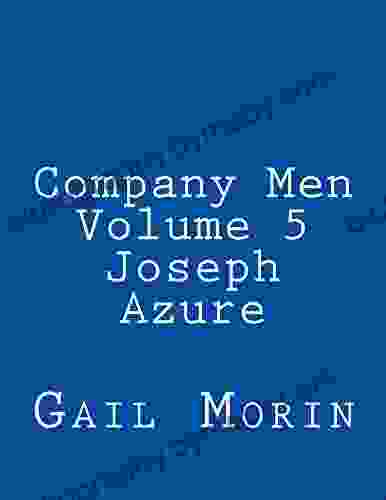
 Christopher WoodsCompany Men Volume Joseph Azure: Unlocking the Secrets of Success in the...
Christopher WoodsCompany Men Volume Joseph Azure: Unlocking the Secrets of Success in the...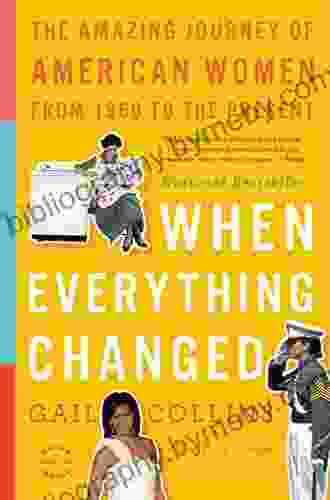
 Felipe BlairThe Amazing Journey of American Women from 1960 to the Present: A Book Review
Felipe BlairThe Amazing Journey of American Women from 1960 to the Present: A Book Review
 Tom HayesUniting Hearts, Helping Hands, Igniting Hope: A Book that Inspires Compassion...
Tom HayesUniting Hearts, Helping Hands, Igniting Hope: A Book that Inspires Compassion... Todd TurnerFollow ·3.9k
Todd TurnerFollow ·3.9k Don ColemanFollow ·8.2k
Don ColemanFollow ·8.2k Jordan BlairFollow ·13.1k
Jordan BlairFollow ·13.1k Barry BryantFollow ·12.5k
Barry BryantFollow ·12.5k Thomas PynchonFollow ·8.5k
Thomas PynchonFollow ·8.5k Caleb CarterFollow ·6.9k
Caleb CarterFollow ·6.9k Cody BlairFollow ·3.3k
Cody BlairFollow ·3.3k Bryson HayesFollow ·2.1k
Bryson HayesFollow ·2.1k
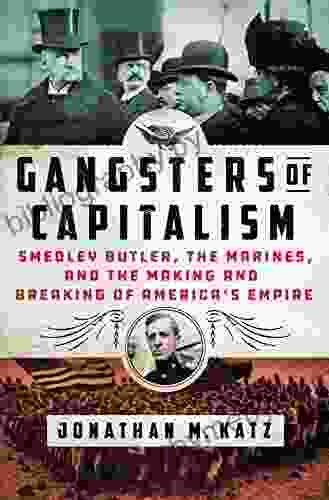
 Brian West
Brian WestSmedley Butler: The Marines and the Making and Breaking...
: A Marine's...
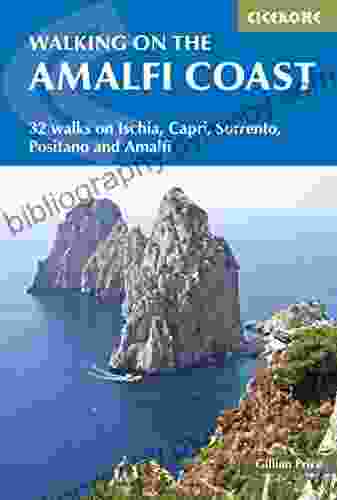
 Gabriel Garcia Marquez
Gabriel Garcia MarquezIschia, Capri, Sorrento, Positano, And Amalfi: An...
Explore the...

 Felix Carter
Felix CarterAdorn Your Little Princess with Fleur Ange's Exquisite...
Welcome to the enchanting...

 Kelly Blair
Kelly BlairUnveiling the Secrets of the Historical Way and Fishermen...
Step into the pages...

 Angelo Ward
Angelo WardKnit the Cutest Thumbless Mittens for Your Little One:...
Prepare to be...
4.8 out of 5
| Language | : | English |
| Paperback | : | 160 pages |
| Item Weight | : | 9.5 ounces |
| Dimensions | : | 6 x 0.4 x 9 inches |
| File size | : | 5323 KB |
| Text-to-Speech | : | Enabled |
| Screen Reader | : | Supported |
| Enhanced typesetting | : | Enabled |
| Word Wise | : | Enabled |
| Print length | : | 230 pages |


